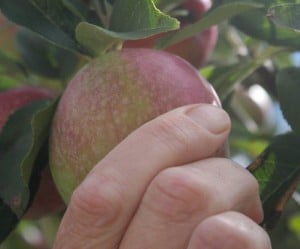
September is traditionally the month of lawn maintenance. If you have a small lawn, rake out the ‘thatch’ or dead grass and moss that has accumulated over the mowing season, with a wire rake; on larger lawns, use a scarifier. Spike compacted areas with a fork, face the front of the fork, then push the spikes into the ground rocking it backwards and forwards to improve aeration and drainage. In severe cases you may need to ‘hollow tine’, to break up surface compaction, these can be hired and you can share the cost with friends. Finally, brush in top dressing, repair worn patches by overseeding, finally, feed with autumn lawn fertiliser.
Deadhead plants that are still flowering like Cannas and Dahlia’s so they flower until the first frosts, do the same to your hanging baskets and continue to feed with high potash tomato fertiliser. Once they are past their best, replant with a winter display. Towards the end of the month in northern areas and definitely before the first frosts, propagate or lift tender plants and store them in a cool frost free place over winter and give evergreen topiary or hedges a final trim before winter.
Continue planting large, top quality spring bulbs between two and three times the depth of the bulb. Plant them as early in the month as you can while the soil is still warm, so they are well established before the onset of cooler weather. Daffodils, hyacinth and crocus should be planted before the end of the month; tulips a little later, in November. Many bulbs prefer a warm sunny site in moisture retentive, free draining soil. Plant them in sizable clumps to increase the impact of the floral display, when doing so, plant groups in a large, deep hole rather than attempting to plant them individually. Backfill the hole with soil after planting but don’t firm it with your foot or it may damage the bulbs. Small clumps can be planted in aquatic containers for ease of lifting and dividing at a later date and should be covered with wire netting to prevent them being damaged by squirrels.
Pick and use early apples, lift and gently twist the fruit and those that are ripe, and they so should detach easily with the stalk intact. At the same time remove any fruit that is mummified with ‘brown rot’ and dispose of it away from the garden, to prevent infection next year. If you see signs of damage, on an apple, take care, there may be a wasp feeding inside!
Perennial weeds are particularly vulnerable to translocated weed killers, like glyphosate, at this time of year. As autumn progresses, sap is taken down and stored in the roots where it sets about its work slowly and thoroughly. Always follow the manufacturer’s instructions and apply on a still, dull day. Oh, and don’t forget, cover your pond with netting towards the end of the month, before the first leaves start to fall.
Happy Gardening! Matt










